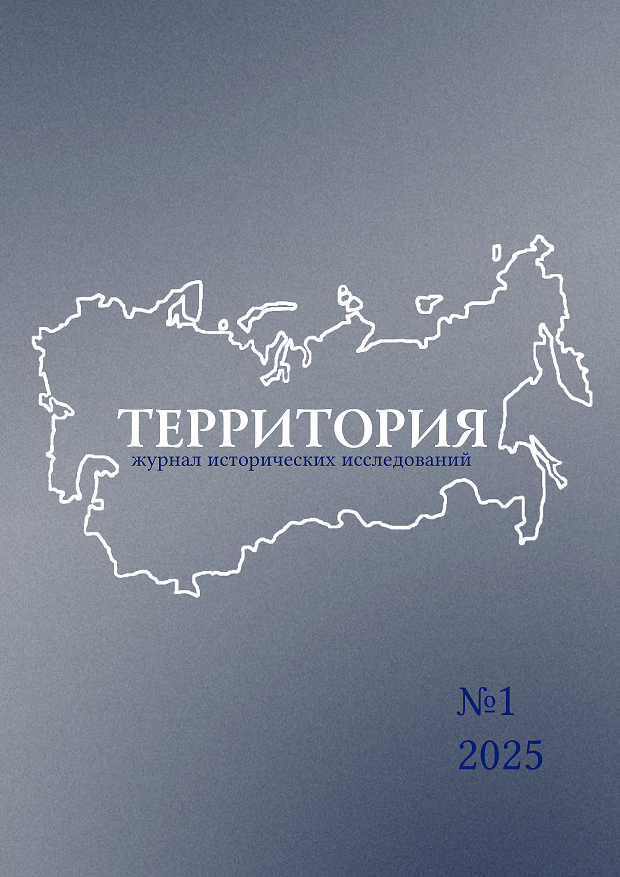“Loving Fatherland does not mean kissing Birches”: Why Sergei Dovlatov and Alexander Gelman rejected the Glorification of the “Russian Tree” in the late USSR
Abstract
The article is deals with the contradictory attitude of some Russian citizens towards the demonstration of love for the “Russian birch” in the mass culture of the last decades of the Soviet state. It raises the following questions. Where does the critical attitude of writers such as Sergei Dovlatov and Alexander Gelman towards the appeasement of fellow citizens at the sight of a white-trunked tree come from? How widespread were both phenomena - the love of the birch among the population of the RSFSR and the critical perception of this love by individual contemporaries? How can they be explained and described? Using mainly Soviet poetry and ego-documents, the authors outline the extent and intensity with which the veneration of the “Russian tree” was expressed in late Soviet Russian mass culture. The article proposes a theoretical toolkit that provides an adequate language to describe the love for the “Russian birch” and the concern for its popularity, and formulates a general hypothesis about the timing and motives for the final transformation of the birch into a “Russian tree”. The authors argue that the victory in the Great Patriotic War, the population's fatigue from hardships of the first half of the 20th century, the conservative turn in state policy and the massive growth of nationalism among the political and cultural elite and the general public in the 1960s to 1980s provided the birch with a solid “Russian home” and conditioned, on the other hand, the emergence of a critical and ironic discourse concerning the process.
Downloads
References
Барт Р. Мифологии. М.: Академический проект, 2008. 351 с.
Белошапка Н. В. Государство и культура в СССР: от Хрущева до Горбачева. Ижевск: Издательский дом «Удмуртский университет», 2012. 320 с.
Блюм А. В. Как это делалось в Ленинграде. Цензура в годы оттепели, застоя и перестройки. 1953–1991. СПб.: Академический проект, 2005. 296 с.
Бодрийяр Ж. Система вещей. М.: Рудомино, 2001. 168 с.
Болтунова Е. М., Егорова Г. С. Территория и история: позднесоветские проекты «Города-герои» и «Золотое кольцо». М.: Кучково поле, 2022. 400 с.
Вайль П., Генис А. 60-е. Мир советского человека. Изд. 2-е, испр. М.: Новое литературное обозрение, 1998. 368 с.
Гершзон М. Оттепель. Министерство культуры СССР в 1953–1963 гг. М.: Модест Колеров, 2024. 224 с.
Голубев А. Вещная жизнь: материальность позднего социализма. М.: Новое литературное обозрение, 2022. 328 с.
Иванова А. Магазины «Березка»: парадоксы потребления в позднем СССР. М.: Новое литературное обозрение, 2017. 304 с.
Кречмар Д. Политика и культура при Брежневе, Андропове и Черненко. 1970–1985 гг. М.: АИРО-XX, 1997. 316 с.
Лелеко В. В. Образ березы в советской массовой песне 1960–1980-х годов // Известия Российского государственного педагогического университета им. А. И. Герцена. 2009. №. 101. С. 335–339.
Митрохин Н. Русская партия: Движение русских националистов в СССР. 1953 – 1985 годы. М: Новое литературное обозрение 2003. 624 с.
Оборин В. А., Чагин Г. Н. Чудские древности Рифея: Пермский звериный стиль. Пермь: Пермское книжное издательство, 1988. 187 с.
Советская культурная дипломатия в годы Холодной войны: 1945–1989: Коллективная монография / научн. ред. О. С. Нагорная. М.: РОССПЭН, 2018. 446 с.
Соловей Т., Соловей В. Несостоявшаяся революция: Исторические смыслы русского национализма. М.: Феория, 2009. 434 с.
Эггелинг В. Политика и культура при Хрущеве и Брежневе. 1953–1970 гг. М.: АИРО-XX, 1999. 311 с.
Brudny Y. Reinventing Russia. Russian Nationalism and the Soviet State, 1953–1991. Cambridge, Mass., 1998. 364 p.

